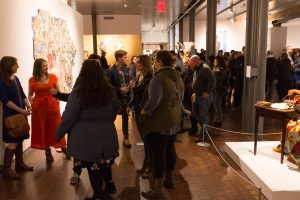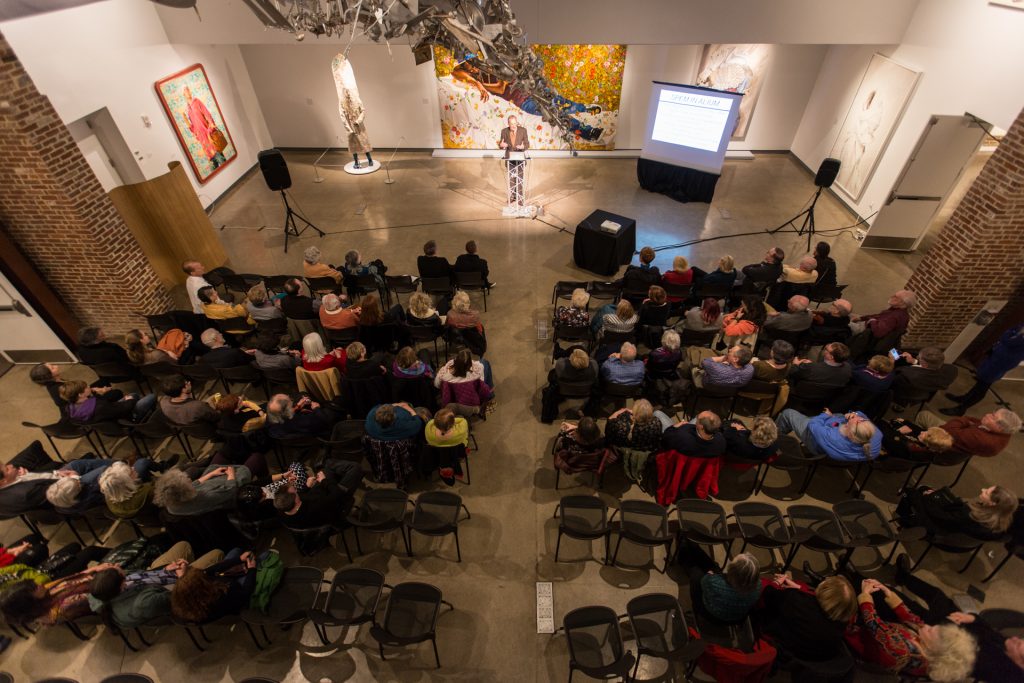When Daniel Gilliam, director of radio for Louisville Public Media, contacted us about an idea to capture a 16th-century musical composition as a 360-degree virtual reality video, we were immediately intrigued.
The musical composition selected for this project “Spem in alium”, written in 1570 by English composer Thomas Tallis, is itself an early experiment in surround sound. Using a Latin text from the Sarum Rite, Tallis composed the motet (a short musical setting of a sacred text) “Spem in alium” for 40 individual voices, who would stand in a horseshoe shape around the audience. The music is composed in such way that the melodies and harmonies passed through the choir encircle the listener, creating spatial effects that seem centuries ahead of its time.
This isn’t the first time this composition has spurred contemporary creativity. “Spem in alium” also inspired one of the most revered works of 21st-century sound art, Forty Part Motet, by Janet Cardiff and George Bures Miller. The duo recorded forty individual voices which are played through forty strategically placed speakers allowing the audience to be intimately connected with the voices as they move through the space. This work is currently on view at the North Carolina Museum of Art, a short drive from our Durham location.
Louisville Public Media station 90.5 WUOL partnered with the Louisville Chamber Choir and their director Kent Hatteberg to pair Tallis’ masterpiece with 21st-century technology: VR/360 video and sound. 90.5 WUOL’s team recorded the Louisville Chamber Choir singing Tallis’ “Spem in alium” at 21c Museum Hotel, St. James Catholic Church, and the elevator of the Brown Hotel.
On April 7th, we held a video release party to celebrate this remarkable new way to experience some of the world’s oldest music. Guests experienced the music in surround sound and viewed the video through a VR headset in our video lounge. John Hale, director of liberal studies at the University of Louisville, was on hand to discuss the origins of Tallis’ masterpiece.

21c Louisville was proud to be a part of the presentation of this historic musical composition through the lens of 21st-century technology. We asked Daniel Gilliam to share his thoughts about the project.
21c: Why were you interested in presenting this work through a 360-degree virtual reality video?
Daniel Gilliam: Once we knew we could get our hands on a camera to record in 360, Tallis’ “Spem in alium” immediately came to mind, since it’s meant to be performed surrounding the listeners. The Louisville Chamber Choir had recently performed it, so I had a feeling Kent Hatteberg, the director of LCC, might be game. It was surprisingly easy to convince him!
21c: Are there other musical compositions that would lend themselves well to VR video?
DG: I think opera would be fascinating to watch in VR!
21c: Since this is the first 360 VR video that you’ve produced, what was your reaction to experiencing the video the first time?
DG: There’s an immediate “WOW!” response whenever you see VR for the first time. It seems like an out-of-body experience or a dream. Watching others put on the Oculus VR headset – and their reactions – was just as fun to watch.
21c: Did the response to the project from the community surprise you?
DG: I was surprised by how many people showed up for the event – way more than we expected! On the other hand, this is the first time (I’m aware of) anyone has done something like this, at least in Louisville.
21c: What do you hope to accomplish by presenting this VR video and making it available to everyone online?
DG: We hoped to show that as a classical radio station, we’re looking toward the future and technology that is still developing. On one hand, we’re always introducing people to the past, but that doesn’t mean we can’t look forward.
Daniel also shared that the team at WUOL is in the brainstorming and planning phases for more virtual reality projects, so stay tuned for future experiments!
To view the performance for yourself, click here. We encourage watching on a mobile device that you can move around to have the full virtual experience (be sure to look up at the ceilings!).
Photographs by J. Tyler Franklin/Louisville Public Media



